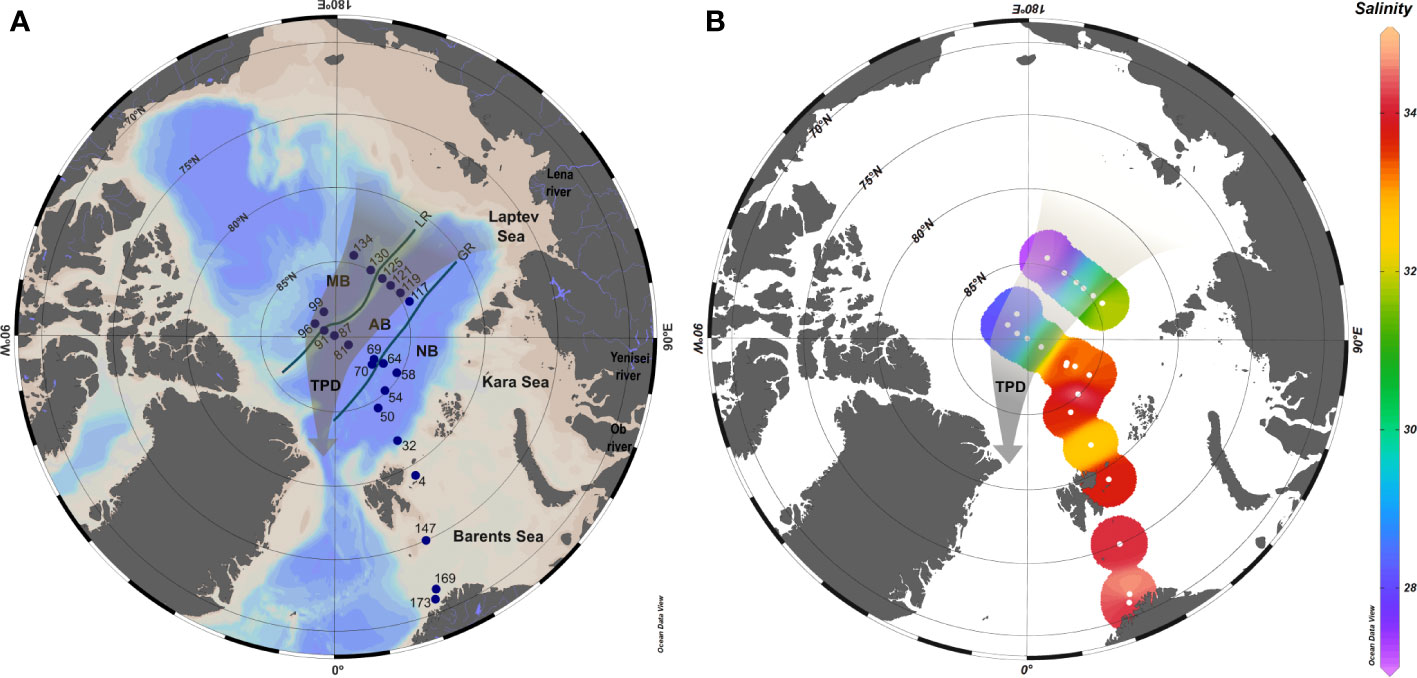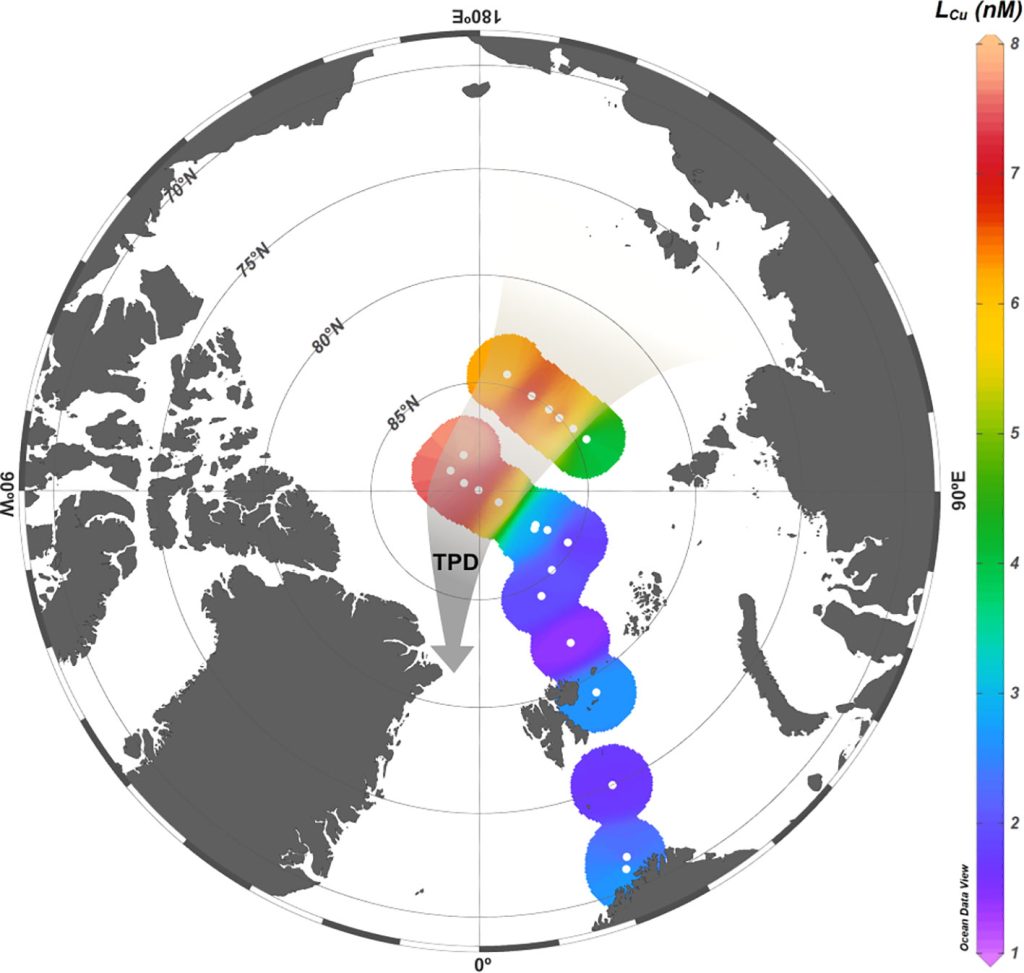Trans Polar Drift transport controls the dissolved copper-organic binding ligand distribution
Copper is known as bio-essential trace metals which dissolved distribution is constrained by complexation with dissolved organic-binding ligands. The distribution and strength of the organic ligands depend on the environmental setting of the studied area (open or coastal ocean, productive or not, etc.). The work of Arnone and her colleagues (2023, see reference below) reports the concentrations and conditional stability constants of dissolved copper-binding ligands (LCu) in the Arctic Ocean (GEOTRACES cruise GN04 R/V Polarstern). Copper and ligand concentrations were measured along full-depth profiles in the Barents Sea, Nansen Basin, Amundsen Basin.
One of the main results illustrates the role of the Trans Polar Drift (TPD) to generate maximum LCu concentrations in the Polar Surface Waters (see figure 2). Actually, this water mass is transported from the Siberian shelves to the central Arctic by the TPD and receives large inputs of terrestrial riverine organic matter and trace metals. Thus, the TPD acts as the main source of LCu in the Amundsen and Makarov Basins and determines its distribution in the Arctic Ocean, underlining how environmental features constrain the fate of the bio-active metals.


Reference:
Arnone, V., Santana-Casiano, J. M., González-Dávila, M., Planquette, H., Sarthou, G., Gerringa, L. J. A., & González, A. G. (2023). Natural copper-binding ligands in the Arctic Ocean. The influence of the Transpolar Drift (GEOTRACES GN04). Frontiers in Marine Science, 10. Access the paper: 10.3389/fmars.2023.1306278
